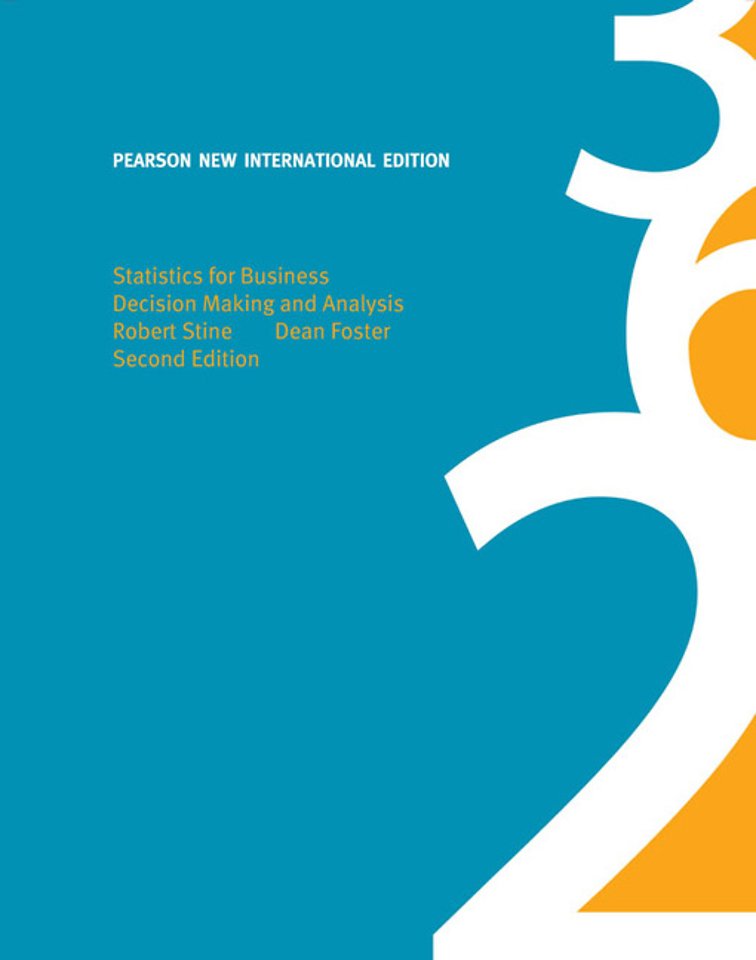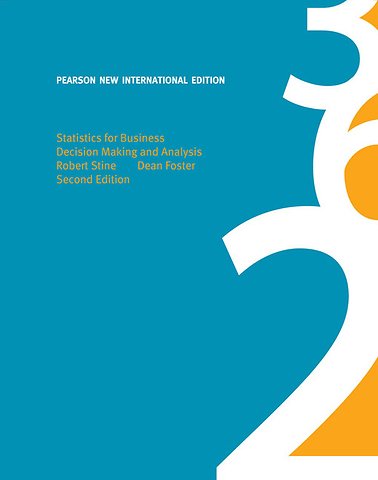Statistics for Business: Decision Making and Analysis
Pearson New International Edition
Paperback Engels 2013 9781292023397Samenvatting
Were you looking for the book with access to MyStatLab? This product is the book alone, and does NOT come with access to MyStatLab. Buy the book and access card package to save money on this resource.
In Statistics for Business: Decision Making and Analysis, authors Robert Stine and Dean Foster of the University of Pennsylvania’s Wharton School, take a sophisticated approach to teaching statistics in the context of making good business decisions. The authors show students how to recognize and understand each business question, use statistical tools to do the analysis, and how to communicate their results clearly and concisely.
In addition to providing cases and real data to demonstrate real business situations, this text provides resources to support understanding and engagement. A successful problem-solving framework in the 4-M Examples (Motivation, Method, Mechanics, Message) model a clear outline for solving problems, new What Do You Think questions give students an opportunity to stop and check their understanding as they read, and new learning objectives guide students through each chapter and help them to review major goals. Software Hints provide instructions for using the most up-to-date technology packages. The Second Edition also includes expanded coverage and instruction of Excel® 2010 and the XLSTATTM add-in.
The MyStatLabTM course management system includes increased exercise coverage with the Second Edition, along with 100% of the You Do It exercises and a library of 1,000 Conceptual Questions that require students to apply their statistical understanding to conceptual business scenarios. Business Insight Videos show students how statistical methods are used by real businesses, and new StatTalk Videos present statistical concepts through a series of fun, brief, real-world examples. Technology tutorial videos at the exercise level support software use.
Specificaties
Lezersrecensies
Inhoudsopgave
Anderen die dit kochten, kochten ook
Rubrieken
- advisering
- algemeen management
- coaching en trainen
- communicatie en media
- economie
- financieel management
- inkoop en logistiek
- internet en social media
- it-management / ict
- juridisch
- leiderschap
- marketing
- mens en maatschappij
- non-profit
- ondernemen
- organisatiekunde
- personal finance
- personeelsmanagement
- persoonlijke effectiviteit
- projectmanagement
- psychologie
- reclame en verkoop
- strategisch management
- verandermanagement
- werk en loopbaan







